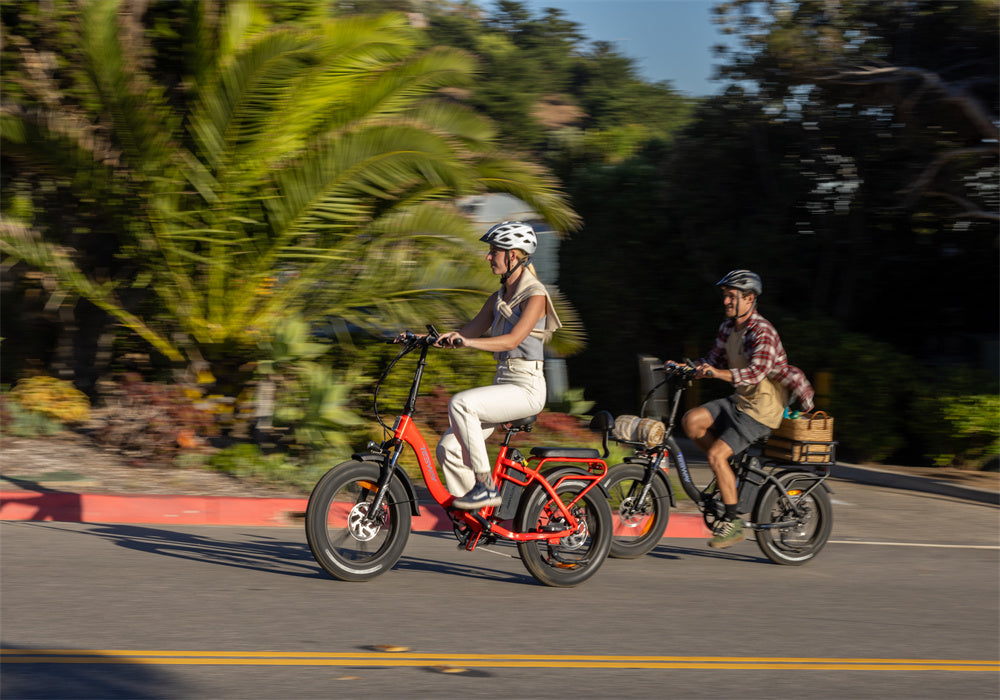E-Bikes have become a ubiquitous tool in the modern urban landscape. As more people look to join the e-bike revolution, a pivotal question arises: Should you buy an e-bike or undertake the challenge of building one yourself?
Is it Cheaper to Build or Buy an Ebike
The question of whether it is more economical to build or purchase an ebike is multi-faceted, heavily depending on individual circumstances such as your technical prowess, budget constraints, and how you value your time.
Time as a Resource: The process of building an ebike is not just about assembling parts; it involves extensive research to find the right components, learning assembly techniques, and troubleshooting. Each hour spent on these tasks is an hour away from other productive or leisure activities. Contrast this with buying a ready-made ebike, where the biggest time investment is perhaps a few hours spent choosing the right model.
Hidden Costs: Building your own ebike isn't limited to purchasing parts. There are often hidden costs, like specialized tools, unexpected component replacements due to assembly mishaps, and even the potential need for professional help if something goes seriously wrong. These costs can quickly escalate beyond the initial budget.
Skill Level and Learning Curve: The assumption that building an ebike is straightforward can be misleading. It requires electrical knowledge to safely install a battery and motor, mechanical skills for assembling the frame and components, and often, software skills for programming the controller. The learning curve is steep, and mistakes can be both frustrating and expensive to rectify.
In most cases, buying an ebike from a reputable manufacturer offers a balance of cost efficiency and convenience, particularly when factoring in the hidden costs and time associated with building one from scratch.

How Much Does it Cost to Build an Electric Bike
The cost to build an electric bike can vary dramatically based on the quality and performance level of the components chosen.
-
Motor and Battery Costs: These are the core of your ebike's performance. Motors vary widely in their capabilities and prices, typically ranging from $300 for a basic model to over $1,000 for high-performance versions. Batteries are similarly priced, with higher capacity and longer-lasting models pushing the upper price boundaries.
-
Essential Electronics: Besides the motor and battery, essential electronics such as controllers, which can range from $30 for basic models to over $200 for advanced, programmable units, and sensors, which are necessary for regulating the motor’s power, add to the cost.
-
Structural Components: A high-quality bike frame that can support the additional stress of an ebike system might cost anywhere from $200 to $800. Wheels and tires must also be suitable for higher speeds and weights than typical bicycles, adding another $100 to $500 to the overall cost.
- Additional Parts: Upgraded brakes for safety ($100-$300), a stronger chain to withstand the torque of the motor ($20-$50), and a durable gear system ($50-$200) are essential for reliable operation.

What is the Most Expensive Part of an Ebike
The motor and battery are unequivocally the most significant investment in an ebike, whether you are building or buying:
-
Motor:The choice between a hub motor and a mid-drive motor affects both cost and performance. Mid-drive motors, which offer better torque and rider balance, are typically more expensive than hub motors but provide a superior riding experience, especially on hilly terrain.
- Battery:The battery is not just costly but also crucial for determining how far you can ride on a single charge. Advanced lithium-ion batteries cost more but provide greater range and longevity, thus enhancing the ebike's usability and performance.

How Much Do You Have to Spend to Get a Good Ebike
Determining how much to spend on a good ebike depends on your specific needs and expectations:
-
Entry-Level Ebikes: These bikes, typically priced around $1,000, offer basic features suitable for short commutes and occasional rides. They are a great choice for newcomers to ebiking.
-
Mid-Range Ebikes: Priced between $2,000 and $3,000, these models provide enhanced features such as better battery life, more robust motors, and additional comfort and safety features. They are ideal for regular commuters and those who use their ebike for more varied terrain and longer distances.
- High-End Ebikes: For enthusiasts willing to invest over $3,000, high-end ebikes offer the best in terms of technology, performance, and luxury. These bikes often come equipped with cutting-edge motor systems, top-tier battery technology for extended ranges, superior frame materials for reduced weight, and advanced user interfaces. High-end models are particularly suitable for serious cyclists or those who require their ebike for intensive daily use.

Where Can I Buy a Good EBike
If you're searching for a dependable and adaptable e-bike, TESWAY provides an array of choices that cater to various requirements and tastes. Whether you're looking for an everyday commuter e-bike or a foldable model for enhanced convenience, TESWAY has a comprehensive lineup, ensuring you discover the ideal e-bike to complement your lifestyle.
For those who value convenience and portability, the TESWAY S5 Pro stands out as an excellent choice. This model features a foldable design, allowing you to save significant space whether you're storing it at home or taking it on public transport. Its compact form does not compromise on performance, making it ideal for both commuting and leisure rides.
Commuter bikes need to be efficient, comfortable, and reliable — qualities that the TESWAY Walker embodies perfectly. With its affordable price and impressive features, the Walker ensures you get where you need to go without hassle. It's a fantastic choice for everyday use, combining cost-effectiveness with functionality.
For adventurers and those who traverse more challenging terrains, the TESWAY S7 with its fat tires is the definitive solution. The S7's robust build and superior traction make it perfect for off-road trails and uneven surfaces, providing a stable and smooth ride in various conditions.
Choosing TESWAY means investing in quality, durability, and the freedom to explore your environment in comfort and style. Whether you need a bike that fits in a small apartment, seeks an economical solution for daily commutes, or desires a rugged vehicle for outdoor adventures, TESWAY has an ebike that's right for you.
FAQs
What is the average range of an e-bike on a single charge?
The range of an e-bike can vary widely but typically falls between 25 to 70 miles, depending on the battery capacity, the weight of the rider, terrain, and the level of motor assist used.
How long does it take to charge an e-bike?
Charging time for an e-bike battery typically ranges from 3 to 6 hours, depending on the battery's capacity and the charger's output.
What factors affect the battery life of an e-bike?
Battery life is influenced by the battery type, frequency of use, level of motor assist, terrain, rider weight, and maintenance. Proper care and storage of the battery can also significantly impact its lifespan.







Share:
The Real Difference Between a 500W and 750W Motor on E-Bikes
Beachside Biking: Is It Possible to Ride an Electric Bike on the Beach?